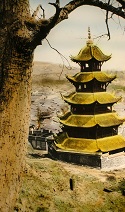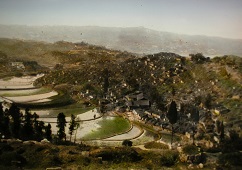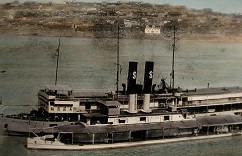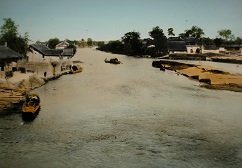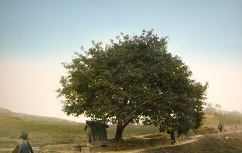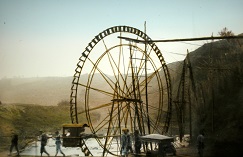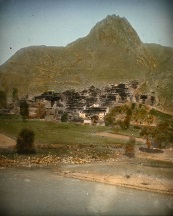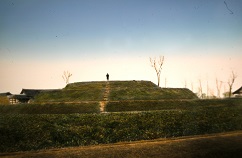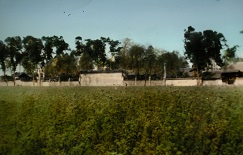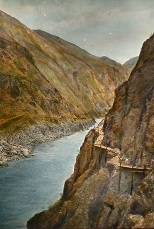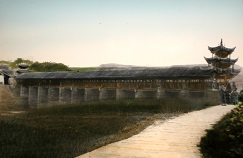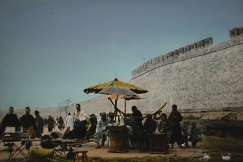
Chengdu was surrounded by this high stone wall, nine miles in circumference. Chengdu's first wall was built in 311 BCE making the city almost as old as Rome. All but a small part of the wall was demolished in the fifties to simplify travel.
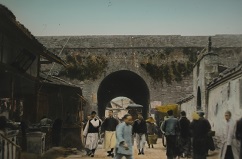
South Gate was the most important of the four gates leading through Chengdu's wall into the city. First widened and then demolished, the site of the old south gate is now a complex of roads and flyovers.
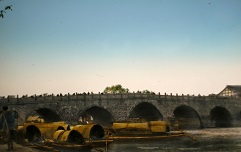
The old city of Chengdu was surrounded by rivers, and visitors came to the old South Gate over this bridge. The new South Bridge, bordered now by fancy restaurants and hotels, is the most important of the bridges into downtown Chengdu.
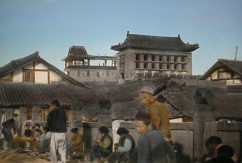
Each of Chengdu's four city gates was actually a series of two gates in walls which enclosed a 'no man's land.' Guests were welcome: enemies could be easily attacked. Because of their circular form, people referred to Chengdu's city gates as "moon gates." The people in the foreground sell small items on South Bridge.
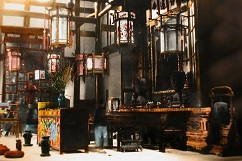
The interior of a large very rich Buddhist temple. This may be the Wenshu Yuan, the temple to Manjusri that is today Chengdu's largest Buddhist temple, but Chengdu had a great many temples in the early twentieth century and many of them have not survived.
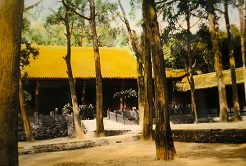
Chengdu and Sichuan played an important role in the wars that following the end of the Han Dynasty (206BCE-220CE) that were immortalized in the Romance of the Three Kingdoms. Zhuge Liang, Premier of the state of Shu, was noted for his wisdom and loyal service to Liu Bei, the Emperor of Shu. This series of temples remains a popular destination in Chengdu.
